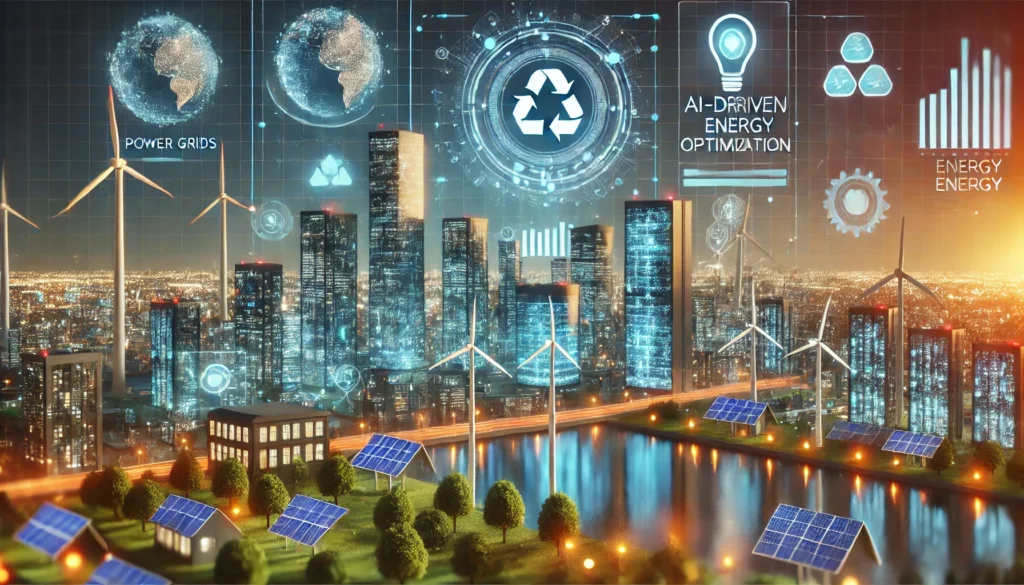Imagine a world where your home adjusts its energy usage automatically, your office building predicts peak energy demands, and entire cities optimize power grids in real-time. This is no longer science fiction. Thanks to artificial intelligence (AI) and AI-driven energy tools, this future is already a reality. In this article, we’ll explore how AI is transforming energy optimization, why it matters, and how you can leverage these tools to save energy, reduce costs, and contribute to a greener planet.
What Is AI-Driven Energy Optimization?
At its core, AI-driven energy optimization refers to using artificial intelligence to analyze, predict, and manage energy consumption with unparalleled efficiency. These systems rely on advanced machine learning algorithms, IoT (Internet of Things) devices, and real-time data processing to identify patterns and make smarter energy decisions.
Think of it as having a virtual energy assistant that monitors usage, detects inefficiencies, and implements changes to reduce waste. Whether for homes, factories, or power grids, these tools are making energy systems smarter and more sustainable.
Why Is AI-Driven Energy Optimization Important?
The importance of energy optimization is undeniable, especially in the face of global climate challenges. AI transforms the way energy is managed, addressing inefficiencies in traditional systems that often lead to wasted resources. Here’s why it’s a game-changer:
- Cost Savings: AI tools optimize energy use to reduce utility bills for homes and businesses.
- Sustainability: By minimizing waste, AI-driven systems reduce carbon footprints and support global climate goals.
- Reliability: Predictive capabilities help prevent energy system failures, ensuring stable power supply.
- Scalability: AI systems can be tailored for small homes or massive industrial complexes.
For instance, energy inefficiency costs industries billions annually, with up to 20% of energy usage being wasted due to poor management. By adopting AI-driven systems, organizations can eliminate this waste while contributing to environmental sustainability.
How AI-Driven Energy Tools Work
AI-driven energy tools combine data collection, machine learning, and automation. Here’s how they work:
- Data Collection: IoT devices and sensors gather real-time data on energy usage, weather patterns, and equipment performance.
- Machine Learning: Algorithms analyze data to identify patterns, predict future demand, and flag inefficiencies.
- Automation: Systems automatically adjust settings, such as dimming lights, optimizing HVAC systems, or shifting energy consumption to off-peak hours.
- Continuous Improvement: With time, these systems learn and improve, refining recommendations for even greater efficiency.
A notable example is Google, which reduced the energy used to cool its data centers by 40% using AI. This breakthrough highlights AI’s potential to deliver both environmental and financial benefits.
Real-World Applications of AI in Energy Optimization
AI-driven energy tools are already making an impact across industries. Here are some applications:
- Smart Homes: Devices like Nest Thermostats learn user habits to optimize heating and cooling, reducing energy waste.
- Industrial Facilities: AI monitors machinery to optimize energy consumption during production, cutting costs and emissions.
- Renewable Energy: AI predicts solar and wind energy output, enabling more efficient integration into the power grid.
- Smart Cities: AI systems manage streetlights, traffic signals, and public transportation for maximum efficiency.
These innovations demonstrate AI’s versatility and potential to revolutionize energy management at every level.
Addressing Common Challenges and Misconceptions
Despite its promise, AI-driven energy optimization faces challenges:
- High Initial Costs: While upfront investment may seem steep, the long-term savings justify the expense.
- Data Privacy Concerns: Advanced systems anonymize user data to address privacy issues.
- Complexity: Many tools are user-friendly and require minimal intervention, countering the misconception that AI systems are overly complicated.
To ease adoption, governments and utility companies often provide incentives for implementing smart energy systems, such as rebates on smart thermostats or tax credits for renewable energy integration.
Getting Started with AI-Driven Energy Optimization
If you’re ready to embrace the future of energy optimization, here are some steps to get started:
- Assess Your Needs: Identify areas of high energy waste, such as inefficient heating systems or appliances.
- Explore AI Tools: Research energy management solutions like smart thermostats, IoT devices, or specialized software.
- Start Small: Begin with a single device or pilot program before scaling up.
- Monitor and Adjust: Use insights from AI tools to make ongoing improvements.
For example, starting with a smart thermostat can save up to 15% on energy bills annually—a simple but impactful first step.
The Future of AI in Energy Optimization
The future of energy optimization is brimming with potential, driven by AI innovations:
- Self-Healing Grids: AI-enabled grids could detect and resolve issues autonomously, reducing downtime and improving resilience.
- Personalized Energy Plans: AI may tailor energy plans based on user preferences and historical data.
- Global Energy Networks: By connecting energy systems across borders, AI could create a more sustainable global energy infrastructure.
As AI continues to evolve, its role in revolutionizing energy optimization will only grow stronger.
Conclusion
AI-driven energy optimization is reshaping the way we use and manage energy. By cutting costs, reducing emissions, and improving efficiency, these tools hold the key to a more sustainable future. Whether you’re a homeowner, business owner, or city planner, there’s an AI solution that can help you make a difference.

